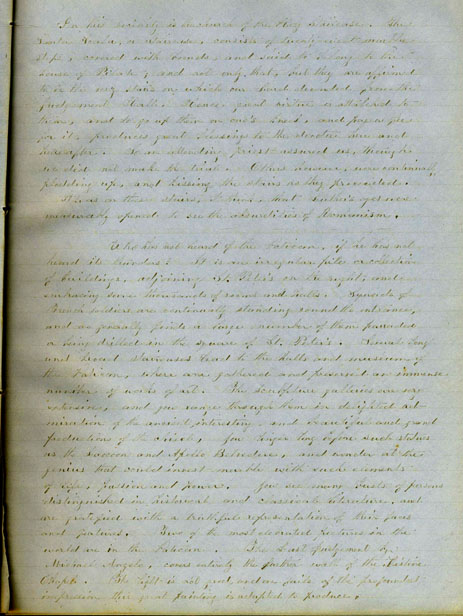Travel
Diary of Mrs. R.P. Eaton:
Europe,
Egypt, and Palestine, ca. 1857

Who has not heard of the Vatican, if he has not heard its thunders?
It is an irregular pile or collection of buildings, adjoining St. Peter’s
on the right, and embracing some thousands of rooms and halls. Squads
of French soldiers are continually standing round the entrance, and one
generally finds a large of them paraded or being drilled in the square
of St. Peter’s. Several long and broad staircases lead to the halls
and museum of the Vatican, where are gathered and preserved an immense
number of works of art. The sculpture galleries are very extensive, and
you range through them in delighted admiration of the ancient, interesting,
and beautiful and grand productions of the chisel. You linger long before
such statues as the Laocoon and Apollo Belvedere, and wonder at the genius
that could invest marble with such elements of life, passion and power.
You see many busts of persons distinguished in historical and classical
literature, and are gratified with a truthful representation of their
faces and features. Two of the most celebrated pictures in the world are
in the Vatican. The Last Judgement by Michael Angelo, covers entirely
the farther wall of the Sistine Chapel. The light is not good, and one
fails of the profoundest impression this great painting is adapted to
produce.